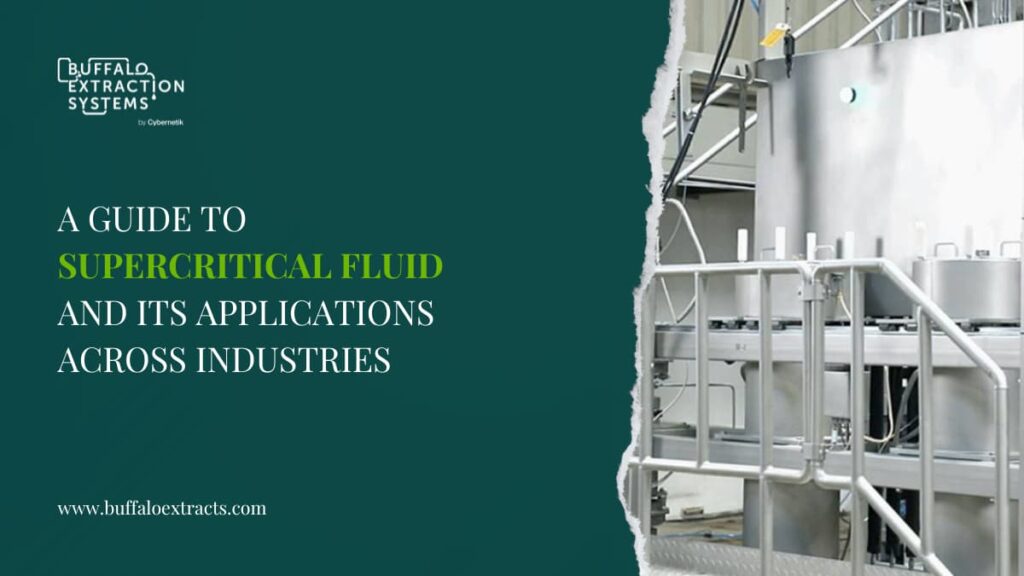Harnessing the Power of Supercritical Fluid Technology: Applications Across Industries
Supercritical fluids, with their unique properties and versatility, have emerged as powerful tools with a wide range of applications across various industries. These fluids exist in a state where they exhibit both gas and liquidlike properties, offering distinct advantages over conventional solvents. This article aims to explore the fundamentals and applications of supercritical fluids across industries, ranging from pharmaceuticals and food processing to environmental remediation and beyond.
Understanding Supercritical Fluids
Supercritical fluids are those fluids that are heated and pressurized to a state where they surpass their critical temperature and pressure points. At these conditions, the substance exhibits properties of both a gas and a liquid.These features include high diffusivity, low viscosity, and enhanced solvating power. The most commonly used supercritical fluid is carbon dioxide (CO2).Others such as water, ethylene, and propane can also be utilized.
Some of the applications of supercritical fluids across industries are listed below and are as follows:
- Pharmaceuticals: Supercritical CO2 extraction process (SCFE) is widely employed in the pharmaceutical industry for the extraction of active pharmaceutical ingredients (APIs) from natural sources, such as plants and herbs. CO2, being non-toxic and readily available, is particularly favored for this purpose. Additionally, supercritical fluid chromatography (SFC) is gaining traction as an analytical technique for separating and analyzing pharmaceutical compounds with high efficiency and resolution.
- Food Processing: In the food industry, supercritical fluid technology is utilized for various purposes, including extraction of flavors, fragrances, and essential oils from natural sources. Supercritical CO2 extraction is preferred due to its ability to produce high-quality extracts without leaving behind solvent residues. Furthermore, supercritical fluid encapsulation is employed to encapsulate bioactive compounds, vitamins, and antioxidants, enhancing their stability and bioavailability in food products.
- Materials Science: Supercritical fluid foaming is utilized in materials science for the production of porous materials with controlled pore size and distribution. Polymers, metals, and ceramics can be foamed using supercritical CO2 as a blowing agent, resulting in lightweight materials with improved mechanical properties. Additionally, supercritical fluid deposition is employed for the fabrication of thin films and coatings with precise thickness and composition.
- Environmental Remediation: Supercritical fluids are increasingly utilized for environmental remediation applications, such as soil and groundwater remediation. Such application is related to their ability to extract contaminants effectively. Supercritical CO2 is employed to extract organic pollutants from contaminated soil, while supercritical water oxidation (SCWO) is utilized for the destruction of hazardous waste compounds through oxidation at high temperatures and pressures.
- Cosmetics and Personal Care: In the cosmetics and personal care industry, supercritical fluid technology is utilized for the extraction of natural ingredients, such as botanical extracts and essential oils, without the use of organic solvents. Supercritical CO2 extraction preserves the integrity of delicate compounds and eliminates the risk of solvent residues in cosmetic formulations. Additionally, supercritical fluid particle formation is employed for the production of nanoparticles and microspheres that are used in sunscreen formulations and skincare products.
- Aerospace and Automotive Industries: Supercritical fluids find applications in aerospace and automotive industries for precision cleaning of critical components, such as engine parts, fuel systems, and hydraulic systems. Supercritical CO2 cleaning offers a non-destructive and environmentally friendly method for removing contaminants, oils, and greases from intricate surfaces without leaving residues or damaging delicate components. Moreover, supercritical fluids are used in the production of lightweight composite materials and advanced coatings for aerospace and automotive applications, offering enhanced performance and durability.
- Energy Production: Supercritical fluids are utilized in energy production for the extraction of hydrocarbons from natural sources such as shale gas, oil sands, and coal deposits. Supercritical CO2 extraction and liquefaction technologies enable the recovery of valuable hydrocarbons while minimizing environmental impact and water usage compared to traditional extraction methods. Additionally, supercritical CO2 is under investigation for its potential as a working fluid in advanced power generation systems. These include supercritical CO2 Brayton cycles, which offer higher efficiency and lower emissions compared to conventional steam cycles.
- Waste Management and Recycling: Supercritical fluids are explored for their potential applications in waste management and recycling processes, offering environment friendly solutions for the treatment and valorization of various waste streams. Supercritical water oxidation (SCWO) is investigated for the treatment of organic waste, including sewage sludge, biomass residues, and hazardous chemicals, converting them into harmless byproducts such as water, carbon dioxide, and salts. Additionally, supercritical CO2 is utilized in the extraction of valuable materials from industrial waste streams, such as metals, polymers, and organic compounds, facilitating their recovery and recycling.
- Biotechnology and Biomedical Engineering: Supercritical fluids play a vital role in biotechnology and biomedical engineering for the extraction, purification, and formulation of bioactive compounds, biomaterials, and pharmaceuticals. Supercritical CO2 extraction is utilized to isolate bioactive compounds from natural sources, such as medicinal plants, algae, and marine organisms, for use in pharmaceuticals, nutraceuticals, and functional foods.
Conclusion
In conclusion, supercritical fluid technology offers a wealth of opportunities across industries, driven by its unique properties and versatility. From pharmaceuticals and food processing to materials science and environmental remediation, the application of supercritical fluid extraction across industries are diverse and far-reaching. As research and development in this field continue to advance, we can expect to see further innovation and optimization of supercritical fluid processes, leading to enhanced efficiency, sustainability, and product quality across various industrial sectors. By harnessing the power of supercritical fluids and , industries can unlock new possibilities and address complex challenges in a wide range of applications.

